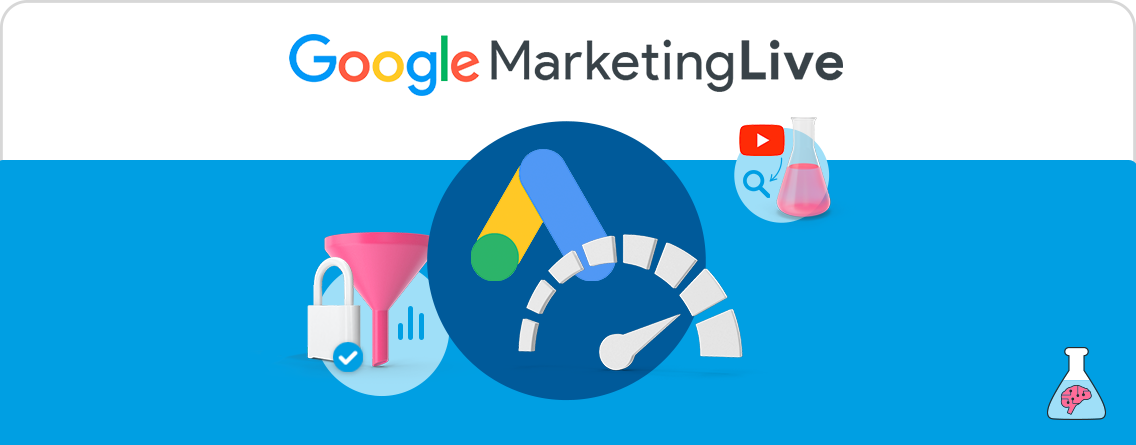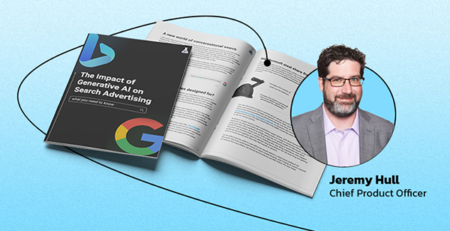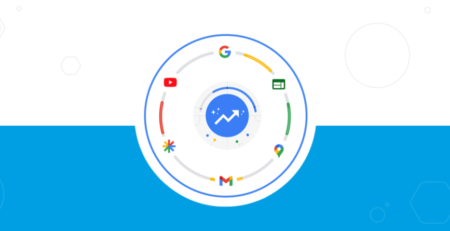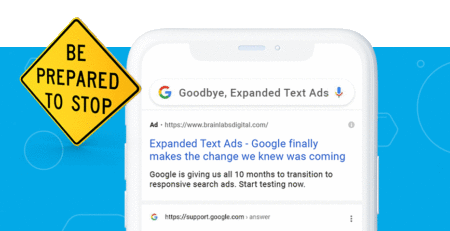More Automation, More Insights: Google Marketing Live 2022
Google Marketing Live is an incredibly exciting event, especially as it heads into its ninth year and returns to an in-person format. It’s an opportunity to connect with fellow marketers, a chance to provide feedback directly to Google’s product teams, and a look at Google’s vision for the future of data, advertising, and privacy.
Today Google shared several announcements that will make their advertising ecosystem more powerful and simpler to use. During the opening keynote of GML a diverse group of Google leaders showcased new advertising solutions and enhancements for current products to a crowd of several hundred in-person attendees and even more online viewers. These announcements unsurprisingly featured a wealth of new enhancements to Performance Max, Google’s fully-automated solution for marketers looking to take a performance-based approach across Google’s entire ecosystem of ad inventory. Google also debuted new measurement and testing features and highlighted their commitment to privacy-first solutions for advertisers.
Performance Max gets more conversion sources & transparency
Performance Max is a revolutionary goal-based campaign format that leverages automation to harness intent and serve ads across all Google properties and help advertisers find more converting customers. Last year Google announced that the Performance Max was going into an open beta test, and last November this campaign type became available to all advertisers – and along the way Google has regularly added more features that provide insights and integrate first-party data.
This year Google has announced five new features coming to Performance Max campaigns:
-
- Performance Max | Experimentation tools – The underlying question every savvy advertiser has about Performance Max is “Does it work better than my current campaigns?” Google’s Performance Max Experimentation Tool allows marketers to run A/B experiments to measure the performance uplift their account may get when using Performance Max as a complement to existing performance campaigns that are optimizing to the same conversion goal.
This tool has been in beta for the past few months and will enter general availability later this year for campaigns without a product feed attached. In tandem, Google will also release a new A/B experiment tool specifically for advertisers to test Performance Max against Standard Shopping Campaigns.
-
Performance Max | Explanations – When performance changes, we all want to know why. Explanations, already launched for some search and app campaign types, are coming to Performance Max. This diagnostic tool will help marketers understand Performance Max campaign performance changes in just a few clicks. This new feature will help save time in understanding what’s driving performance fluctuations over time, leaving more room for campaign optimization. Explanations will be rolled out this month and will be expanded over time.
-
Performance Max | Recommendations & Optiscore – The trickiest challenge with any type of automation is figuring out when and how to lean in and impose changes on the system. To help answer this question for Performance Max campaigns, Google is adding two features that have long provided value for advertisers in other campaign types.
The Recommendations page will surface recommendations to improve a Performance Max campaign based on performance history, campaign settings and Google search volume & trends. Optiscore will surface and quantify optimization and growth uplift potential for Performance Max campaigns. Optiscore will provide more clarity to common questions such as “What can I do to make Performance Max work better?”
- Performance Max | Search Ads 360 & Floodlight tags – The new SA360 has already allowed advertisers to create, manage and report on Performance Max campaigns. The next update will provide advertisers the ability to measure and optimize Performance Max campaigns using Floodlight tags for click-through conversions.
It is necessary to migrate bidding to the new Search Ads 360 to optimize with the same goals, settings and targeting. This was the missing piece we have been waiting on here at Brainlabs in the last few months, to finally combine the power of automation from Performance Max and the advanced bidding solutions we leverage daily through SA360.
- Performance Max | Store Sales Reporting & Bidding – Performance Max has supported some Local goals since the very beginning. With this new feature, advertisers will now have the ability to optimize for Store Sales and not just Store Visits within Performance Max.
Additionally, as soon as Q3, marketers will also be able to promote in stock in-store products, hours, and available offerings like curbside pickup, takeout, or drive through, all of which have massively grown in importance over the past few years of the global pandemic.
- Performance Max | Experimentation tools – The underlying question every savvy advertiser has about Performance Max is “Does it work better than my current campaigns?” Google’s Performance Max Experimentation Tool allows marketers to run A/B experiments to measure the performance uplift their account may get when using Performance Max as a complement to existing performance campaigns that are optimizing to the same conversion goal.
Simple, privacy-safe conversion measurement improvements
As changing privacy regulations continue to impact digital measurement it becomes pivotal to evolve measurement solutions to close the gaps. Regardless of the industry shifts, third-party cookie deprecation and regulations, advertisers can still access accurate measurement that enables optimization for improved performance over time. Google is launching several new privacy-safe measurement solutions for marketers:
-
- Enhanced Conversions | Web in SA360 – This new privacy-centric conversion tracking feature enables conversion tags to capture hashed user-provided customer data that advertisers collect on a conversion page (like email address) and then match it against the Google hashed web data, future proofing measurement by alleviating the reliance on third-party data. It is already available for Google Ads, and it will be rolled out as a closed beta globally on SA360.
- Enhanced Conversions | Leads – Any advertiser who is focused on lead-gen activities knows there’s a big difference between an initial lead and a qualified or converted lead. Released earlier this year, Google has now rolled out Enhanced Conversions that addresses the struggle of lead-focused marketers without a full CRM integration. Enhanced Conversions for Leads brings simplicity and accuracy to lead-gen measurement. It allows advertisers to import offline conversions directly into Google Ads for reporting and optimization. The added simplicity driven by this product is created by the removal of the need to store GCLID data in the marketer’s CRM. This feature is available globally.
- Data Driven Attribution Enhancements – Initially launched five years ago, Google Data-Driven Attribution (DDA) creates a unique attribution model that Google is now confident to categorize as the best model for the majority of advertisers that are seeking to measure and drive performance. DDA has now become the default model for new Google Ads conversion actions and Google Analytics 4 properties. Google will also start to automatically upgrade selected conversions to Data Driven Attribution when they believe this will lead to improved results. Advertisers will still have the option to opt-out of this automatic feature, which will be available globally.
Additionally, any new account created will use Data Driven Attribution, which will be selectable from all web conversion actions in Google Ads and GA4, regardless of the volume. This is the real game changer, as previously a conversion action could only be switched to DDA after recording at least 300 conversions and then had to maintain a certain level of volume to remain eligible. This means that any existing lower-volume conversion actions will now become eligible for DDA for the first time, hence embracing a full DDA model transition.
- Enhanced Conversions | Web in SA360 – This new privacy-centric conversion tracking feature enables conversion tags to capture hashed user-provided customer data that advertisers collect on a conversion page (like email address) and then match it against the Google hashed web data, future proofing measurement by alleviating the reliance on third-party data. It is already available for Google Ads, and it will be rolled out as a closed beta globally on SA360.
Lift Measurement quantifies the impact of YouTube advertising on search behavior
Testing is the core principle Brainlabs was founded on, so we’re especially excited about Google’s new lift measurement tools. It’s built to answer a common question that comes on the heels of even the most successful YouTube advertising campaign–how did the video ads influence future search behavior?
Previously such tests took time and effort to create, run, and measure, usually using manually created geo-targeting and geo-exclusion test and control groups. With this new tool advertisers can quickly launch controlled experiments to measure the causal, incremental effects of video campaigns. The outputs will showcase the correlation between YouTube advertising and shifts in organic searches on both Google.com and YouTube.com as well as incremental conversions, enabling marketers to understand how campaigns are influencing user search behavior.
Savvy search marketers were already testing and quantifying these incremental contributions, but the Search Lift and Conversion Lift measurement tools makes it easier than ever to run these tests without taking time away from other analysis and optimization.
Automation + Insights = Impact
Today Google announced several more innovative upcoming initiatives, such as Google Business Messages, Google Audiences for connected TVs (via Display & Video 360), and video ads on the Discovery feed and YouTube Shorts. However, the core theme of this year’s Google Marketing Live announcements is refinement – and that’s a great thing. Google have clearly been focused on identifying feature gaps, proactively solving for privacy challenges, and listening to user feedback. The 2022 GML announcements are centered around delivering more data and greater transparency to marketers – enabling all of us to pair the power of automation with the insights that accelerate the speed to optimization.




